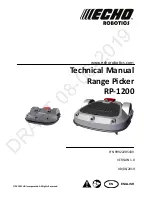
FINISHING HINTS
CHOOSING THE FINISH:
1.
Choose a finish that will meet your expectations for the product you are finishing. Are you matching
existing furniture or do you want a “natural” finish? Is the piece to be functional, decorative or both?
The answers to these questions may affect the type of finish you choose.
2.
Use products of the same brand to ensure compatibility of products.
3.
ALWAYS
follow the stain manufacturer’s instructions.
Pine
is a porous
softwood
and often looks
best when following the finishing directions for softwoods.
4.
We recommend using a wood conditioner under oil base stains.
5.
Work in a well ventilated and well lit area.
1.
Assembly Instructions may contain special finishing informa-
tion for that item.
Read both the Assembly Instructions and these
Finishing Hints completely before beginning.
2.
Sand the entire piece, using #220 grit sandpaper. Sand with the
grain of the wood on flat surfaces and opposite the grain on turn-
ings. End grain (table top ends, seat edges, grooves on turnings,
etc.) accepts more stain. Extra sanding in these areas with a #320
grit sandpaper will reduce stain absorption, creating a more evenly
stained piece.
3.
When sanding is completed, wipe the surface of your furniture
with a cloth or tack rag. Make sure the item is free of dust before
proceeding.
4.
For most products, we recommend preparing and staining the wood
prior to assembly. Due to the assembly procedures for chairs, rock-
ers and stools, we recommend assembling these items prior to
finishing.
5.
If you do choose to finish chairs, rockers or stools prior to assem-
bly, it is
imperative
that you protect the ends of dowels and
spindles, and the mortise holes where the wood is joined, from
finishing products. Use masking tape around the ends, being careful
to cover only the section that will be inserted (remove the tape
after the finish has dried and before the furniture is assembled).
Wood glue
will not bond
if finishing products are present. If you
do get finishing product in these areas, it must be removed to en-
sure proper bonding.
6.
If glue is used in assembly of your furniture, remove any excess
glue spots or drips before finishing. Wood surfaces with glue WILL
NOT accept stains, and will leave a light spot. To remove glue,
wipe off as much as possible while wet, then lightly sand the sur-
face until the remaining glue is removed.
BASIC
EQUIPMENT:
Rubber gloves
Rags
Paper towels
Q-tips
Tack cloth
Drop cloth
Paint brushes
(bristle and foam)
#220 & #320
sandpaper
Mineral spirits
GETTING STARTED:
Presented by Whittier Wood Products
FH E – Page 1 10-03


































